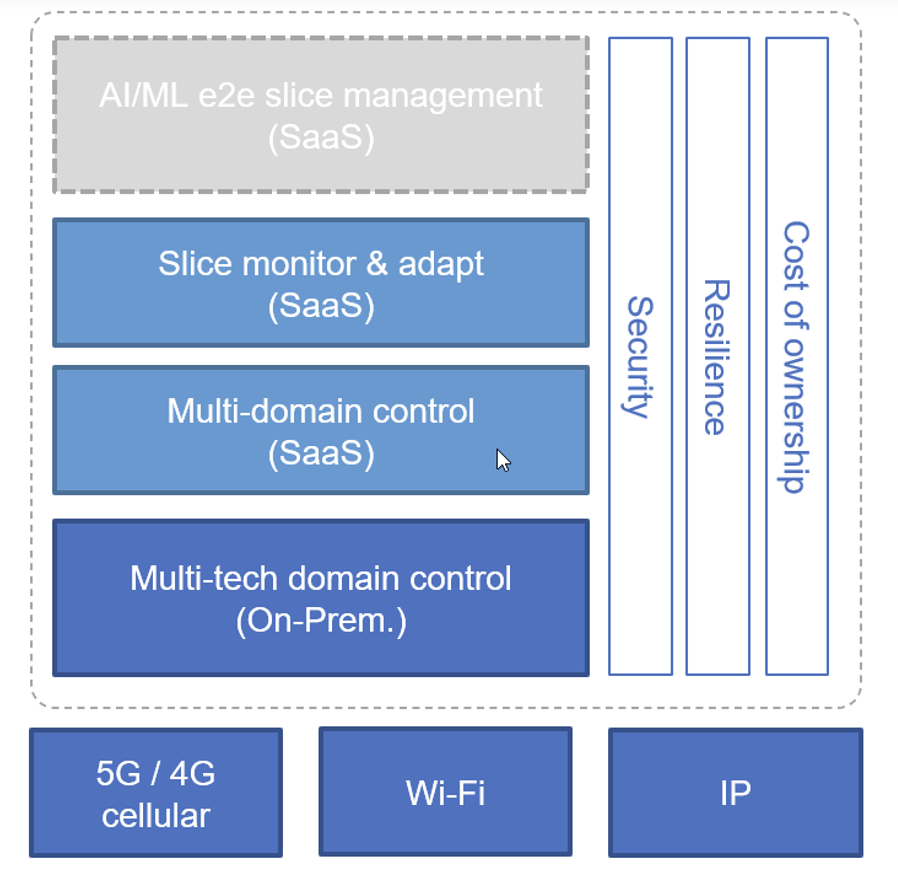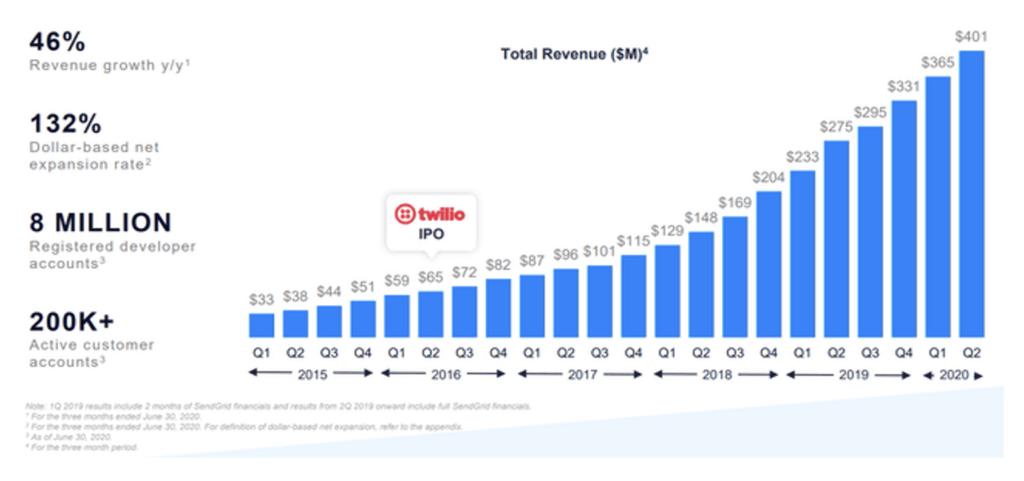Where next in Generative AI’s evolution?
Introduction The global economy is fuelled by knowledge and information, the digital sector growing 6x […]
Industry 4.0 driving the need for 5G
Automation in Industry 4.0 sectors such as smart manufacturing, warehousing, mining and ports is driving increased demand for high performance connectivity. Wi-Fi is widely deployed today but is limited in terms of reliability and support for critical mobility use cases – 5G is much better placed to meet these needs.
In particular, 5G can meet requirements around high bandwidth and low latency, whilst also delivering resiliency through dedicated radio spectrum and has the flexibility to support full mobility ranging from indoor use to wide area outdoor coverage.
A common misconception is that many of these benefits are available within Wi-Fi 6, but whilst Wi-Fi 6 can offer high capacity, it can’t manage radio resources as efficiently as 5G and is intrinsically hampered by sharing unlicensed spectrum, whilst 5G using dedicated spectrum is inherently more reliable.
It would also be missing the point to say that 5G is simply a ‘faster 4G’ – 5G adopts a service-based architecture (SBA) which enables provisioning of customised network slices and zero-touch network operations that provides much finer granularity in how a 5G network can be set up and run.
5G is therefore growing in favour, 75% of manufacturers indicating that 5G is a key enabler within their digital transformation strategies [Capgemini’s global enterprise 5G survey].
Nevertheless, it’s not a clear homerun for 5G and to succeed it must provide the best of both worlds – the functionality, performance and reliability of 5G, twinned with the flexibility, control and ease of use of Wi-Fi deployments.
Delivering 5G to meet enterprise needs
Network slicing is a new capability introduced in 5G that enables mobile network operators (MNOs) to leverage their public 5G infrastructure to provide virtualised private networks to enterprises.
A number of slice types have been defined within the 3GPP standards (3GPP TS23.501):

In a manufacturing example, a computer vision system used for monitoring a production line may require consistent throughput with an ultra-reliable connection and be best served by a URLLC slice, whilst sensors for monitoring humidity levels may only need to connect intermittently to send signals to a control centre and be adequately served using an mMTC slice.
But this approach may be too constraining for some enterprises – the slices being statically defined, whereas what many enterprises really want is the ability to control their connectivity on a more dynamic basis to map resources to an application as circumstances change (adaptive slicing).
As 5G public networks evolve towards fully cloud-native architectures, it will become possible to provision highly customised network slices tailored to specific services. But for now, MNO public 5G offerings are limited by the current approach of predefined eMBB, URLLC, and mMTC slices.
Given these constraints, enterprises are increasingly exploring the option of procuring their own 5G mobile private network (MPN) that can be tailored specifically to their needs.
A 5G MPN is a 5G network (RAN and 5G core) that has been designed, configured and deployed specifically for a given enterprise customer.
Mobile networks are designed to utilise specific licensed spectrum, so the logical choice would be to procure an MPN from an MNO. But with the introduction of shared spectrum in many countries (including the UK) and open flexible architectures (via OpenRAN) there are now many new entrants entering the space offering solutions to enterprises either direct or through partnership.
This gives enterprises the flexibility to decide whether to go with a Managed Service Provider (MSP) that can fully design, deploy, configure and optionally operate the MPN for them (e.g., a school campus), or work with a selection of vendors and partners to assemble their own MPN infrastructure tailored to their requirements (e.g., smart manufacturing, ports, mining etc.).
Currently, all options and potential partnerships are being explored in the marketplace.
MNOs and incumbents such as Ericsson and Nokia are partnering to bring MPN propositions to their enterprise client base (e.g., Ericsson Industry Connect). But equally MNOs are also partnering up with challengers (Affirmed Networks, Parallel Wireless, Metaswitch, Mavenir, Celona et al) and leveraging cloud resources (e.g., Azure, AWS Wavelength) and enterprise IT partners (Cisco, IBM, Oracle) to increase their flexibility and agility in bringing solutions to market that encompass not only connectivity but also provide the cloud, edge and AI capabilities needed by enterprises for their end-end application delivery.
Whilst the necessity of acquiring licensed spectrum for 5G MPN deployments drives many of these players into partnering with the MNOs, in those markets where shared spectrum has been allocated, these players are also able to step up, adopt the role of a Managed Service Provider, and offer complete MPN solutions directly to enterprise clients. Nokia, Ericsson, Mavenir, Celona, Federated Wireless, Expeto and many more all have direct-to-market propositions, and the hyperscalers are also eying up the opportunity with both Amazon and more recently Google announcing MPN offerings, either developed in-house or through partnership (Google working with Betacom, Boingo, Celona and Kajeet in the US).
Enterprises are faced with many options, but this also gives them huge flexibility in finding the best match for their functional and operational needs and also affords them with higher levels of privacy by operating the infrastructure themselves rather than sharing infrastructure within a public network – for those in manufacturing, high security is a key driver in choosing an MPN over utilising a public 5G network slice.
Given the opportunity, it’s hardly surprising that deploying private 5G is a top priority now for IT decision makers in enterprises [Technalysis Research] and 76% of those in manufacturing plan to deploy 5G MPNs by 2024 [Accedian].
Optimising connectivity to match use cases
A key attraction for enterprises in deploying their own 5G MPN is the flexibility it gives them in optimising connectivity to match application requirements. This can be achieved through the definition of an ‘intent’ that states expectations on service delivery and network operation through the expression of a set of goals, functional requirements, and constraints.
The table below describes the requirements for example use cases within a factory automation context:

At a practical level, intents can be managed in a number of ways depending on the skillsets of the enterprise. For those enterprises with limited expertise, a set of low/no-code tools can be provided for defining intents, app/device group administration, and monitoring network and application performance as well as end-end security.
Conversely, for those wanting more fine-grained control, orchestration could be provided to DevOps teams through RESTful APIs with dynamic control over throughput, latency, packet error rate metrics, network segments / IP domains etc., and/or bootstrapped via Infrastructure as Code (IaC) templates – in short, the aim is to enable enterprises to configure and manage their 5G MPNs using DevOps-friendly interfaces as easily as Kubernetes enables them to do with cloud resources for their application and services.
Introducing Zeetta
Zeetta delivers on this vision by hiding the details of vendors and technology domains under a layer of abstraction and then enabling the enterprise application developers to consume these services in an end-to-end low/no-code fashion. This application-centric, end-to-end view also enables DevOps teams to independently innovate and operate applications without the need for centralized large networking groups.
The platform has been developed and trialled within the £9m 5G-ENCODE project, and provides enterprises with a ‘single pane of glass’ to visualise their end-to-end network as well as a set of automation features for optimal network management:
Automate
Adapt
Accelerate
Zeetta translates the demand and intent into a set of parameters and complex actions for each domain, and leverages the open interfaces provided by the MNOs/MSPs supplying the MPN to create the connectivity slice and avoid over-dimensioning of the RAN, Core and BSS/OSS hence reducing cost (CAPEX and OPEX). This slice is then continuously monitored, compared and adapted based on the quality of experience (QoE) targets.

Zeetta product architecture
In summary
5G offers high capacity, low latency, and full flexibility, coupled with reliability through dedicated spectrum. Whilst public 5G network slices will evolve over time, the current lack of in-building coverage and fine-grained control means that for many enterprises the best solution is to procure their own 5G MPN.
Many pilots [Vodafone & Ford] have already demonstrated the significant benefits of 5G MPNs and a number of initial deployments are already operational [Verizon & UK ports]. 5G MPN rollout is likely to reach around 25k installations by 2026 and accelerate rapidly to ~120k by 2030 [Analysis Mason; IDC; Polaris Market Research; ABI research].
Whilst many have leant heavily on MNOs to help design, deploy and configure their MPNs, such an approach will be difficult to scale, and the growth projections are unlikely to be realised unless 5G MPNs can be as simple to deploy and manage as experienced with cloud resources today.
If achieved, this will open up 5G MPNs to enterprises of all sizes – in essence, similar to the democratisation of telco APIs brought about by the introduction of developer-friendly platforms (and RESTful APIs) from the likes of Twilio a decade or so ago.

Twilio growth in the past decade [source: Twilio]
The cloud emerged in a similar timeframe, but since those early launches of elastic processing and storage, a multibillion-dollar industry has grown up around them supplying tools and supplementary services to make the consumption of these resources simpler. To enable enterprise 5G MPNs to be built on-demand as simply as is now enjoyed with cloud resources will require a similar ecosystem of tools and services to emerge.
Zeetta is leading the vanguard in this regard by providing a sophisticated orchestration tool that acts essentially as a ‘Kubernetes for MPNs’, but extends across multiple technology domains (4G, 5G, Wi-Fi, SD-WAN, MEC, public 5G slices etc.) to provide comprehensive management, and all exposed via an intuitive ‘single pane of glass’ and DevOps-friendly interface.

Introduction The global economy is fuelled by knowledge and information, the digital sector growing 6x […]

How can innovative in GNSS antenna manufacturing unlock new opportunities?